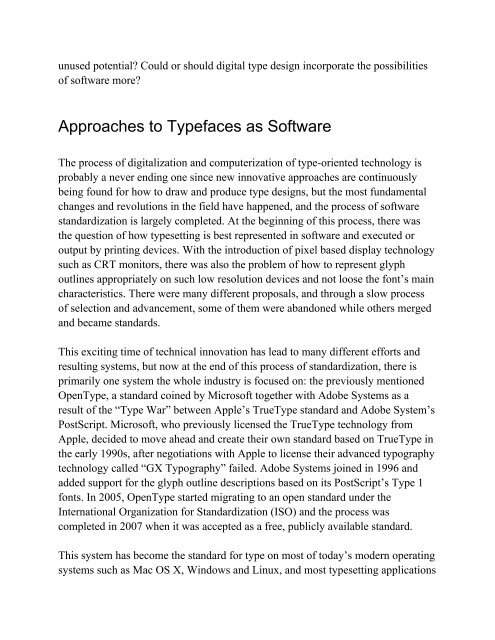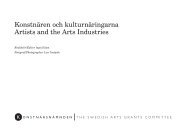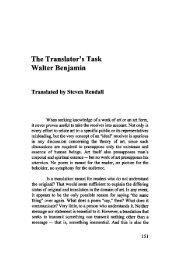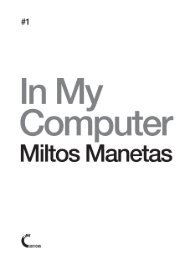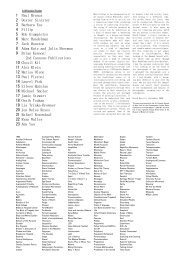Jürg Lehni – Typeface As Progamme - Harald Peter Ström
Jürg Lehni – Typeface As Progamme - Harald Peter Ström
Jürg Lehni – Typeface As Progamme - Harald Peter Ström
Create successful ePaper yourself
Turn your PDF publications into a flip-book with our unique Google optimized e-Paper software.
unused potential? Could or should digital type design incorporate the possibilities<br />
of software more?<br />
Approaches to <strong>Typeface</strong>s as Software<br />
The process of digitalization and computerization of type-oriented technology is<br />
probably a never ending one since new innovative approaches are continuously<br />
being found for how to draw and produce type designs, but the most fundamental<br />
changes and revolutions in the field have happened, and the process of software<br />
standardization is largely completed. At the beginning of this process, there was<br />
the question of how typesetting is best represented in software and executed or<br />
output by printing devices. With the introduction of pixel based display technology<br />
such as CRT monitors, there was also the problem of how to represent glyph<br />
outlines appropriately on such low resolution devices and not loose the font’s main<br />
characteristics. There were many different proposals, and through a slow process<br />
of selection and advancement, some of them were abandoned while others merged<br />
and became standards.<br />
This exciting time of technical innovation has lead to many different efforts and<br />
resulting systems, but now at the end of this process of standardization, there is<br />
primarily one system the whole industry is focused on: the previously mentioned<br />
OpenType, a standard coined by Microsoft together with Adobe Systems as a<br />
result of the “Type War” between Apple’s TrueType standard and Adobe System’s<br />
PostScript. Microsoft, who previously licensed the TrueType technology from<br />
Apple, decided to move ahead and create their own standard based on TrueType in<br />
the early 1990s, after negotiations with Apple to license their advanced typography<br />
technology called “GX Typography” failed. Adobe Systems joined in 1996 and<br />
added support for the glyph outline descriptions based on its PostScript’s Type 1<br />
fonts. In 2005, OpenType started migrating to an open standard under the<br />
International Organization for Standardization (ISO) and the process was<br />
completed in 2007 when it was accepted as a free, publicly available standard.<br />
This system has become the standard for type on most of today’s modern operating<br />
systems such as Mac OS X, Windows and Linux, and most typesetting applications


